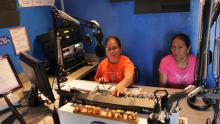FCC Identifies Defective Applications from Non-Commercial Educational FM Filing Window
The Media Bureau's Audio Division received 1,282 applications for new NCE FM stations during the November 2021 Non-Commercial Educational Full Power FM filing window. The FCC has reviewed the applications to identify singletons (applications that are not mutually exclusive (MX) with
any other application filed in the window, and can be accepted for filing), singletons with

